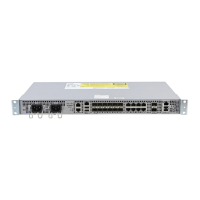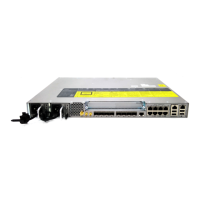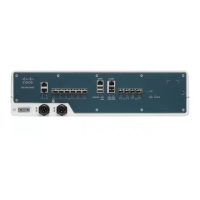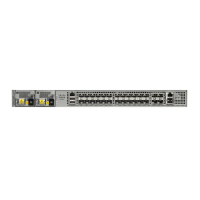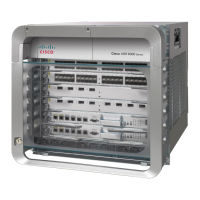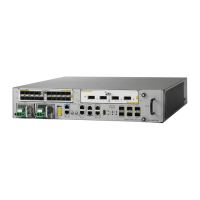Default REP Configuration
REP is disabled on all interfaces. When enabled, the interface is a regular segment port unless it is configured
as an edge port.
When REP is enabled, the sending of segment topology change notices (STCNs) is disabled, all VLANs are
blocked, and the administrative VLAN is VLAN 1.
When VLAN load balancing is enabled, the default is manual preemption with the delay timer disabled. If
VLAN load balancing is not configured, the default after manual preemption is to block all VLANs at the
primary edge port.
REP Segments and REP Administrative VLANs
A segment is a collection of ports connected in a chain and configured with a segment ID. To configure REP
segments, you should configure the REP administrative VLAN (or use the default VLAN 1) and then add
ports to the segment in interface configuration mode. You should configure two edge ports in the segment,
with one as the primary edge port and the other, by default, as the secondary edge port. A segment has only
one primary edge port. If you configure two ports in a segment as primary edge ports, for example, ports on
different switches, REP selects one of them to serve as the primary edge port. You can also optionally configure
where to send segment STCNs and VLAN load balancing. For more information about configuring REP
Administrative VLANs, see the Configuring the REP Administrative VLAN section.
REP Configuration Guidelines
Follow these guidelines when configuring REP:
•
We recommend that you begin by configuring one port and then configure contiguous ports to minimize
the number of segments and the number of blocked ports.
•
If more than two ports in a segment fail when no external neighbors are configured, one port goes into
a forwarding state for the data path to help maintain connectivity during configuration. In the show rep
interface command output, the Port Role for this port shows as “Fail Logical Open”; the Port Role for
the other failed port shows as “Fail No Ext Neighbor”. When the external neighbors for the failed ports
are configured, the ports go through the alternate port state transitions and eventually go to an open state
or remain as the alternate port, based on the alternate port selection mechanism.
•
REP ports must be Layer 2 IEEE 802.1Q or Trunk EFP ports.
•
We recommend that you configure all trunk ports in the segment with the same set of allowed VLANs.
•
Be careful when configuring REP through a Telnet connection. Because REP blocks all VLANs until
another REP interface sends a message to unblock it. You might lose connectivity to the router if you
enable REP in a Telnet session that accesses the router through the same interface.
•
You cannot run REP and STP on the same segment or interface.
•
If you connect an STP network to a REP segment, be sure that the connection is at the segment edge.
An STP connection that is not at the edge could cause a bridging loop because STP does not run on REP
segments. All STP BPDUs are dropped at REP interfaces.
•
If REP is enabled on two ports on a router, both ports must be either regular segment ports or edge ports.
REP ports follow these rules:
LAN Switching Configuration Guide Cisco IOS XE Everest 16.5.1 (Cisco ASR 900 Series)
15
Configuring Resilient Ethernet Protocol
Default REP Configuration

